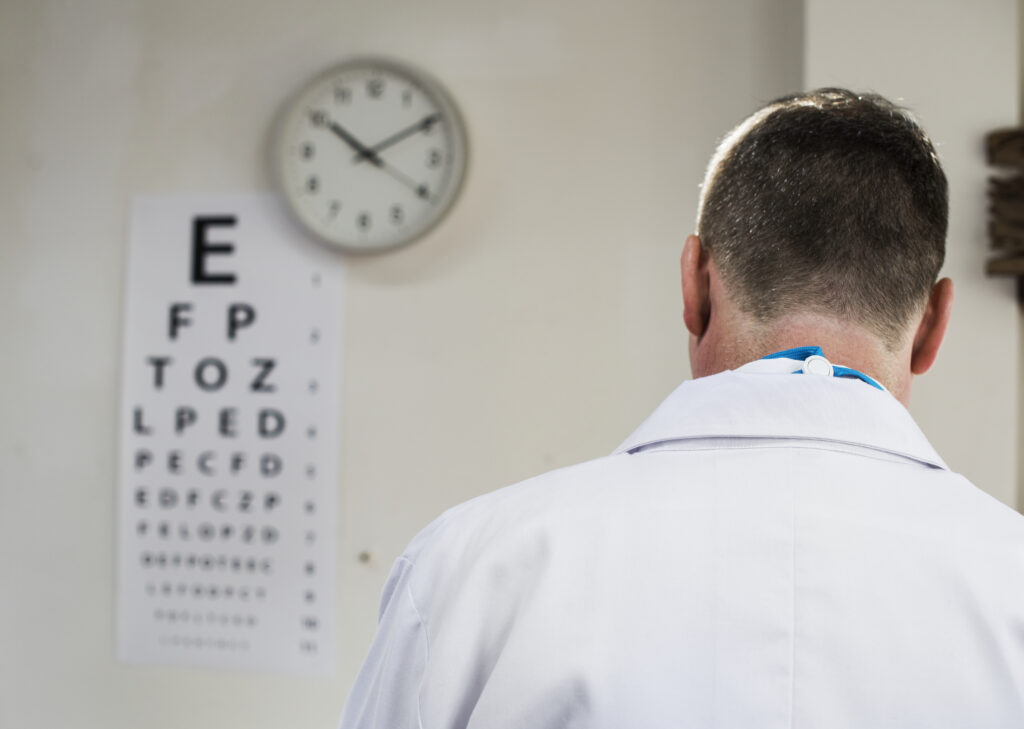
When was the last time you had your eyes checked?
While vision problems can affect anyone, studies show that men are more likely to develop certain eye conditions—yet they’re also more likely to put off routine eye exams. At Shaaf Eye Center, we want to change that by raising awareness about the importance of proactive eye care for men of all ages.
June marks a timely opportunity to spotlight Men’s Vision Health, a crucial but often overlooked topic. Below, we explore five common eye conditions that tend to impact men more than women—and how our team at Shaaf Eye Center can support your long-term eye health.

1. Color Vision Deficiency
Commonly referred to as color blindness, color vision deficiency is a hereditary condition that makes it hard to distinguish between certain colors—especially reds and greens. This condition affects about 1 in 12 men, compared to just 1 in 200 women, due to the way color vision genes are inherited on the X chromosome.
While not dangerous, color vision deficiency can influence daily activities, including career paths in fields like aviation, design, or electrical work.
2. Glaucoma
Often symptomless in its early stages, glaucoma can cause irreversible vision loss if not caught early. This condition results from damage to the optic nerve, often due to high eye pressure. Men over age 60, particularly those with a family history, are more likely to be diagnosed.
According to the Glaucoma Research Foundation, only 50% of people with glaucoma know they have it—making routine screenings critical.
3. Cataracts
While cataracts are common with age, men are more likely to postpone treatment, which can lead to a greater risk of falls, driving accidents, and loss of independence. Cataracts develop when the eye’s natural lens becomes clouded, leading to blurred or dim vision.
Postponing treatment can make cataract surgery more complex later on—yet the surgery itself is safe, fast, and highly effective.
4. Diabetic Eye Disease
Men are more likely to be diagnosed with type 2 diabetes and less likely to maintain consistent glucose control, increasing their risk for complications like diabetic retinopathy. This condition damages the small blood vessels in the retina and can lead to vision loss if untreated.
Early detection is key—even before symptoms appear.
5. Retinal Detachment
Whether due to injury or age-related changes in the eye, retinal detachment happens more frequently in men—especially those who are nearsighted or have experienced trauma to the head or eyes. This condition is a medical emergency and can cause permanent vision loss if not addressed immediately. Warning signs include sudden floaters, flashes of light, or a shadow over your visual field.
Conclusion
Despite these risks, many men skip routine eye exams, waiting until vision problems interfere with work or hobbies. At Shaaf Eye Center, we encourage men to take a more proactive role in preserving their vision—because early action can protect your eyesight for years to come.
Whether you need your first exam in years or you’re managing a chronic condition like glaucoma or diabetes, we’re here to provide compassionate, expert care close to home. Call us at (760) 346-5005 to schedule your eye evaluation today.
Your future vision starts with today’s choices.






